8-[(E)-2-(3,4-dimethoxyphenyl)ethenyl]-1,3-diethyl-7-methyl-purine-2,6 -dione
Synonym(s):(E)-8-(3,4-Dimethoxystyryl)-1,3-diethyl-7-methylxanthine;8-[(1E)-2-(3,4-Dimethoxyphenyl)ethenyl]-1,3-diethyl-3,7-dihydro-7-methyl-1H-purine-2,6-dione;KW-6002
- CAS NO.:155270-99-8
- Empirical Formula: C20H24N4O4
- Molecular Weight: 384.43
- MDL number: MFCD00928421
- SAFETY DATA SHEET (SDS)
- Update Date: 2025-12-23 21:30:31
![8-[(E)-2-(3,4-dimethoxyphenyl)ethenyl]-1,3-diethyl-7-methyl-purine-2,6 -dione Structural](https://img.chemicalbook.in/CAS/GIF/155270-99-8.gif)
What is 8-[(E)-2-(3,4-dimethoxyphenyl)ethenyl]-1,3-diethyl-7-methyl-purine-2,6 -dione?
Absorption
Istradefylline reaches a Cmax of 181.1ng/mL with a Tmax of 2.0h and an AUC of 11,100ng*h/mL. M1, the primary active metabolite, reaches a Cmax of 4.34ng/mL with a Tmax of 3.5h. The M8 metabolite reaches a Cmax of 12.6ng/mL with a Tmax of 3.0h and an AUC of 610ng*h/mL.
Toxicity
The oral LD50 in mice is >300mg/kg.
Patients experiencing an overdose may present with hallucinations, agitation, and dyskinesia. Treat patients by discontinuing istradefylline and administering supportive treatment.
Description
In March 2013, istradefylline (also known as KW-6002) was approved in Japan for adjunctive treatment of Parkinson’s disease (PD). Istradefylline acts by antagonism of the adenosine A2A receptor, which is colocalized with dopamine D2 receptors in the striatum, to enhance dopamine D2-dependent signaling. Istradefylline is a light-sensitive compound and has been evaluated in vitro under low-light conditions to prevent isomerization of the (E)-styryl group and decomposition. Istradefylline has a Ki of 2.2 nM for the rat adenosine A2A receptor and an ED50 of 0.03 mg/kg, po, in reversal of haloperidol-induced catalepsy in mice. Further characterization showed istradefylline to have a Ki of 12 nM for the human adenosine A2A receptor, to be highly selective, and to be a functional competitive antagonist. Istradefylline has activity alone and in combination with levo-dopa in preclinical animal models of PD. The synthesis of istradefylline was accomplished by 1-ethyl-3-(3-dimethylaminopropyl)carbodiimide-mediated coupling of 5,6-diamino-1,3-diethyluracil with 3,4-dimethoxycinnamic acid, followed by cyclization upon treatment with aqueous NaOH, and selective methylation (MeI, K2CO3, and DMF).
Description
Istradefylline is an adenosine receptor 2A (A2A) antagonist (Ki = 2.2 nM in a radioligand binding assay). In vivo, istradefylline inhibits catalepsy induced by haloperidol with an ED50 value of 0.23 mg/kg in rats. Oral administration of istradefylline alleviates postural defects in a dose-dependent manner without inducing dyskinesias or hyperactivity in an MPTP-induced marmoset model of Parkinson''s disease. It also decreases bradykinesias induced by L-DOPA and improves attentional and working memory deficits in an MPTP-induced macaque model of Parkinson''s disease. Formulations containing istradefylline are used to extend on-time in Parkinson''s disease patients experiencing motor fluctuations.
Originator
Kyowa Hakko Kirin (Japan)
The Uses of 8-[(E)-2-(3,4-dimethoxyphenyl)ethenyl]-1,3-diethyl-7-methyl-purine-2,6 -dione
Treatment of Parkinson’s disease (adenosine A 2A receptor antagonist).
Background
Istradefylline, or KW6002, was developed by Kyowa Hakko Kirin in Japan for the treatment of Parkinson's disease as an adjunct to standard therapy. Unlike standard dopaminergic therapies for Parkinson's, Istradefylline targets adenosine A2A receptors in the basal ganglia. This region of the brain is highly involved in motor control.
Istradefylline is indicated as an adjunct treatment to levodopa and carbidopa for Parkinson's disease.
This drug was first approved in Japan on 25 March 2013. Istradefylline was granted FDA approval on 27 August 2019.
Indications
Istradefylline is indicated in adjunct to levodopa and carbidopa in the treatment of Parkinson's disease.
Definition
ChEBI: Istradefylline is an oxopurine.
brand name
Nouriast
Biochem/physiol Actions
Istradefylline (KW-6002) is a potent and selective adenosine A2A receptor selective antagonist which has been investigated for use in Parkinson′s Disease.
Pharmacokinetics
Istradefylline is a selective adenosine A2A receptor inhibitor. It has a long duration of action as it is given once daily and has a half life of 64-69 hours. Patients taking this medication should be monitored for dyskinesia, hallucinations, and lack of impulse control. Consider dose reductions for these patients.
Synthesis
Numerous synthetic approaches to istradefylline have been
developed, with a large majority of these methods employing
5,6-amino-1,3-diethyluracil 97 as a key intermediate.
Despite the commercial availability of 96, most reported routes
to istradefylline rely on sourcing of this intermediate via a wellestablished
four-step synthesis from N,N-diethylurea (94) and cyanoacetic
acid (95). Specifically, 6-amino-1,3-diethyluracil
(96) can be formed by sequential treatment of 94 and 95 with Ac2O
and NaOH. Nitrosation of 96 with NaNO2/AcOH/H2O, followed by
Na2S2O4/NH3-mediated nitroso reduction provided 5,6-amino-
1,3-diethyluracil (97).
Even though other groups have recently reported modified scale
routes to istradefylline, the route described herein will focus on
the sequence outlined by Kyowa Hakko Kogyo research laboratories
during their initial development of istradefylline.
EDC-mediated amine coupling involving 97 and 3,4-dimethoxycinnamic
acid (98) led to the corresponding amide intermediate. After
aqueous workup, this crude amide intermediate underwent cyclization with aqueous sodium hydroxide to yield the desired
purine dione 99 in 47% yield over 2 steps. Methylation of 99 with
MeI/K2CO3 provided istradefylline (XII) in 68% yield.
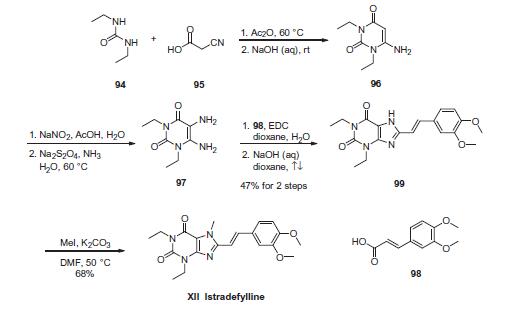
in vitro
the affinity of kw-6002 for the a2ar is 70-fold greater than that for the a1 receptor. the binding affinities (ki) of kw-6002 for human a1 receptor and a2a receptor are >287 nm and 9.12 nm, respectively [1].
in vivo
in mptp neurotoxin model of pd in mice, kw-6002 significantly attenuated striatal dopamine depletion under various conditions. in addition, pretreatment with kw-6002 (3.3 mg/kg, i.p.) before a single dose of mptp attenuated the partial dopamine and dopac depletions 1 week later [2].
Metabolism
The primary metabolite found in urine is the active 4'-O-monodesmethyl istradefylline (M1). Istradefylline is metabolized mainly by CYP1A1, CYP3A4, and CYP3A5. CYP1A2, CYP2B6, CYP2C8, CYP2C9, CYP2C18, and CYP2D6 also partly contribute the the metabolism of istradefylline. Other identified metabolites are 1-β-hydroxylated-4’-O-demethyl istradefylline (M2), 3’,4’-O-didemethyl istradefylline (M3), M1 sulfate conjugate (M4), M1 glucuronide (M5), 1-β-hydroxylated istradefylline (M8) and hydrogenated M3 (M10).
Storage
+4°C
References
[1] park a, stacy m. istradefylline for the treatment of parkinson's disease. expert opin pharmacother. 2012 jan;13(1):111-4.
[2] chen jf, xu k, petzer jp, staal r, xu yh, beilstein m, sonsalla pk, castagnoli k, castagnoli n jr, schwarzschild ma. neuroprotection by caffeine and a(2a) adenosine receptor inactivation in a model of parkinson's disease. j neurosci. 2001;21(10):rc143.
Properties of 8-[(E)-2-(3,4-dimethoxyphenyl)ethenyl]-1,3-diethyl-7-methyl-purine-2,6 -dione
| Melting point: | 191 °C |
| Boiling point: | 601.0±65.0 °C(Predicted) |
| Density | 1.24±0.1 g/cm3(Predicted) |
| storage temp. | 2-8°C |
| solubility | DMSO: soluble5mg/mL (clear solution) |
| pka | 0.47±0.70(Predicted) |
| form | powder |
| color | white to beige |
| CAS DataBase Reference | 155270-99-8 |
Safety information for 8-[(E)-2-(3,4-dimethoxyphenyl)ethenyl]-1,3-diethyl-7-methyl-purine-2,6 -dione
| Signal word | Danger |
| Pictogram(s) |
 Skull and Crossbones Acute Toxicity GHS06 |
| GHS Hazard Statements |
H301:Acute toxicity,oral |
| Precautionary Statement Codes |
P301+P310:IF SWALLOWED: Immediately call a POISON CENTER or doctor/physician. |
Computed Descriptors for 8-[(E)-2-(3,4-dimethoxyphenyl)ethenyl]-1,3-diethyl-7-methyl-purine-2,6 -dione
| InChIKey | IQVRBWUUXZMOPW-PKNBQFBNSA-N |
New Products
Indole Methyl Resin tert-butyl 9-methoxy-3-azaspiro[5.5]undecane-3-carboxylate Boc-His(Boc)-OH 2-CTC Resin 4-Chloro-7-tosy1-7Hpyrrolo[2,3-d]pyrimidine 5,7-Dibromo-1H-indole 2,5-dichloro-N-hydroxy-4,6-dimethylpyridine-3-carboximidamide 2,2-Dimethoxy-7-azaspiro[3.5]nonane hydrochloride 4-chloromethyl-5-methyl-1,3-dioxol-2-one (DMDO-Cl) R-2-BENZYLOXY PROPIONIC ACID 1,1’-CARBONYLDIIMIDAZOLE 1,1’-CARBONYLDI (1,2-4 TRIAZOLE) N-METHYL INDAZOLE-3-CARBOXYLIC ACID 4-((2-hydroxyethyl)thio)benzoic acid 1-(TERT-BUTOXYCARBONYL)-2-PYRROLIDINONE Methyl 6-methylnicotinate 3-Pyridineacrylic acid tert-Butyl carbazate TETRAHYDRO-2H-PYRAN-3-OL 2-((4-morpholinophenylamino) (methylthio) methylene) malononitrile 3-(4-morpholinophenylamino)-5-amino-1H-pyrazole-4-carbonitrile 2,4-dihydroxybenzaldehyde 1,3-Diethyl-1,3-Diphenylurea Methyl 2-methylquinoline-6-carboxylateRelated products of tetrahydrofuran

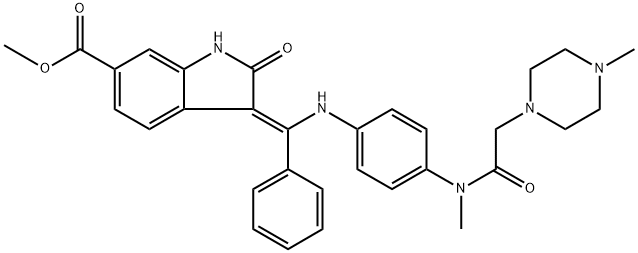
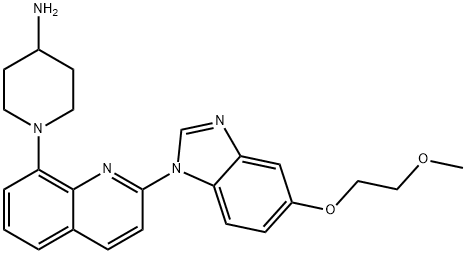
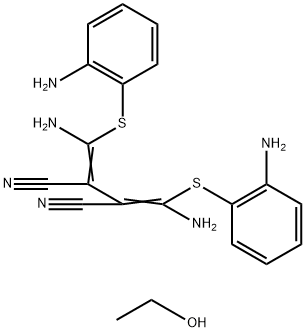
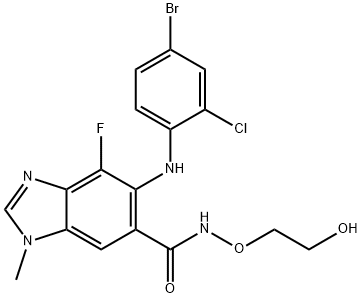

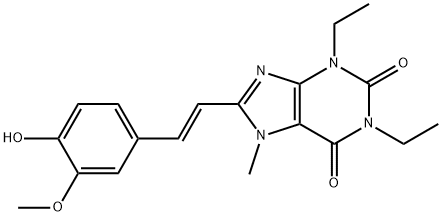
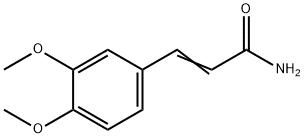
You may like
-
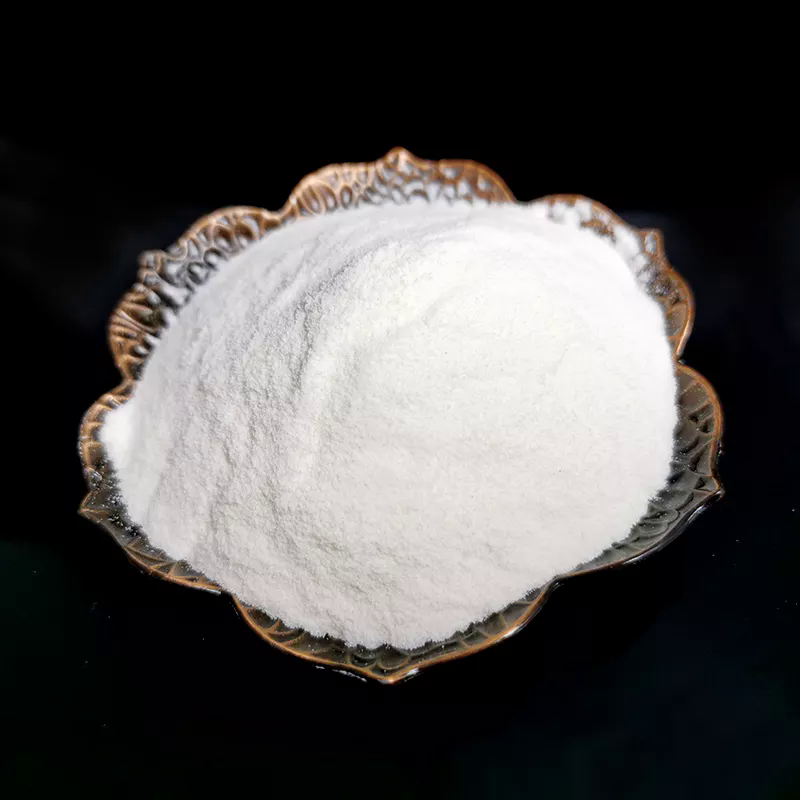 155270-99-8 Istradefylline 98%View Details
155270-99-8 Istradefylline 98%View Details
155270-99-8 -
 Istradefylline CAS 155270-99-8View Details
Istradefylline CAS 155270-99-8View Details
155270-99-8 -
 Istradefylline CAS 155270-99-8View Details
Istradefylline CAS 155270-99-8View Details
155270-99-8 -
 Pyridine 99.5% HPLC /UV SpectroscopyView Details
Pyridine 99.5% HPLC /UV SpectroscopyView Details
110-86-1 -
 Piperazine Spot supply, best priceView Details
Piperazine Spot supply, best priceView Details
110-85-0 -
 Dibutyl PhthalateView Details
Dibutyl PhthalateView Details
84-74-2 -
 Imidazole Spot supply, competitive priceView Details
Imidazole Spot supply, competitive priceView Details
288-32-4 -
 Thiourea 99% ARView Details
Thiourea 99% ARView Details
62-56-6
